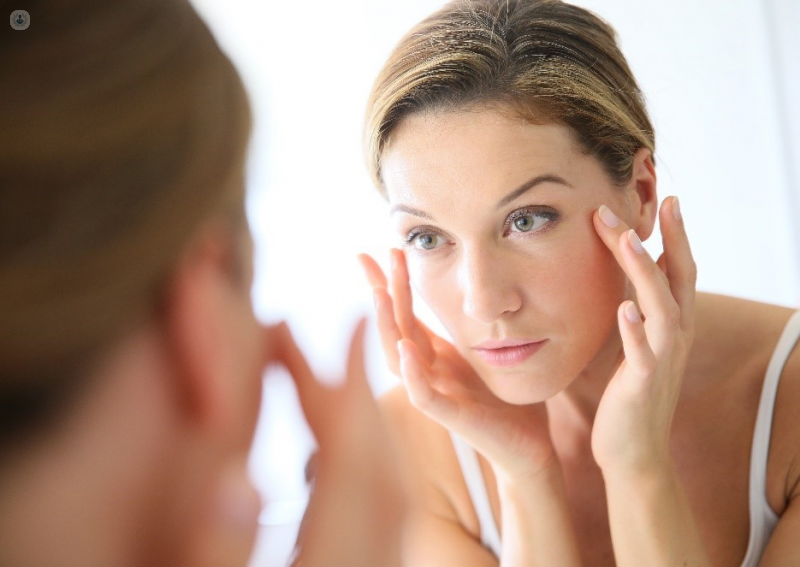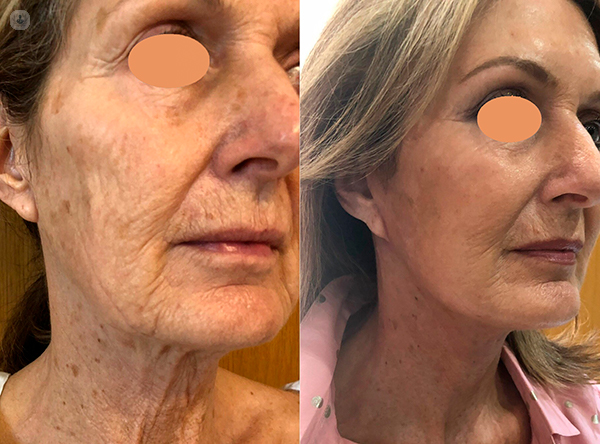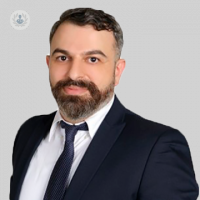When should you go beyond anti-ageing products?
Autore:We have a wider choice of anti-ageing products than ever, promising to keep your skin young or even reverse the signs of ageing. But what can they realistically achieve, and when is it time to look at other options such as surgery? We asked highly experienced facial plastic surgeon Mr Nizar Hamadeh to explain what you should do in your 20s, 30s, and 40s:

There is a wide range of “anti-ageing” products on the market. Despite the name, these products will not stop your skin from ageing: skin is an organ that always ages with time. The role of anti-ageing products is to help your skin age well – and stay healthy.
What products to use
When it comes to helping your skin age well, the two vital products you should use are sunscreen and moisturisers .
Sunscreen is the first product that you should use. It protects and prevents skin from being damaged by sun which would lead to more wrinkles and may lead later into skin cancer. Use sunscreen whenever you are exposed to high UV rays and apply it from childhood.
Moisturiser is equally important, but you won’t normally need to use it until your mid-20s. With age the skin becomes drier, so by the end of 40s your skin glands will start to produce less oil than before meaning you should use stronger moisturisers over time.
Other ways to look after your skin
It’s important to recognise that anti-ageing products are only a part of the story.
To have a healthy skin means you need healthy body. Sleep well, eat healthy, minimise your stress and stay away from smoking.
It’s also important to get the right nutrition. Antioxidants such as vitamin A, C and E are helpful in keeping your skin stay healthy and fresh, and you can start using them in your 30s. The more we age, the stronger effect we need and more frequently we need to use them
When to have surgery
These remedies will work in your 20s and 30s, but in the 40s your skin becomes less elastic and the key issue becomes excess skin. This is the kind of problem that no anti-ageing product can solve. Many will start to have the following issues:
- sagging skin
- jowls
- loss of jawline definition
- loss of volume in the mid-face
- more pronounced naso-labial folds
- appearance of marionette lines.
In particular, the neck will start to look less tense and start to accumulate skin under the chin. With time it goes down beyond the hyoid bone to the thyroid cartilage. Gradually we may develop “turkey neck” and others might develop platisma bands. All these signs of ageing will be more prominent as we increase with age.
Once we have excess skin the most efficient treatment is to remove the skin by having a facelift, necklift or combined surgery.
A well-done face lift will correct most of these ageing signs and takes you back 10 years. On your neck the effect of neck lift can take you back 20 or even 30 years. Here are some examples:

There is no other treatment that can gives you such a good result and can make you look that young. Other treatments such as thread lift, fillers, botox, lasers, and peeling can help certain patients – but not all.
To avoid the high cost and risks of repeat treatment and risks, seek professional advice from a highly qualified physician that practices both surgical and non-surgical or mini-invasive procedures. They can advise you on which procedures would be most helpful to you.


